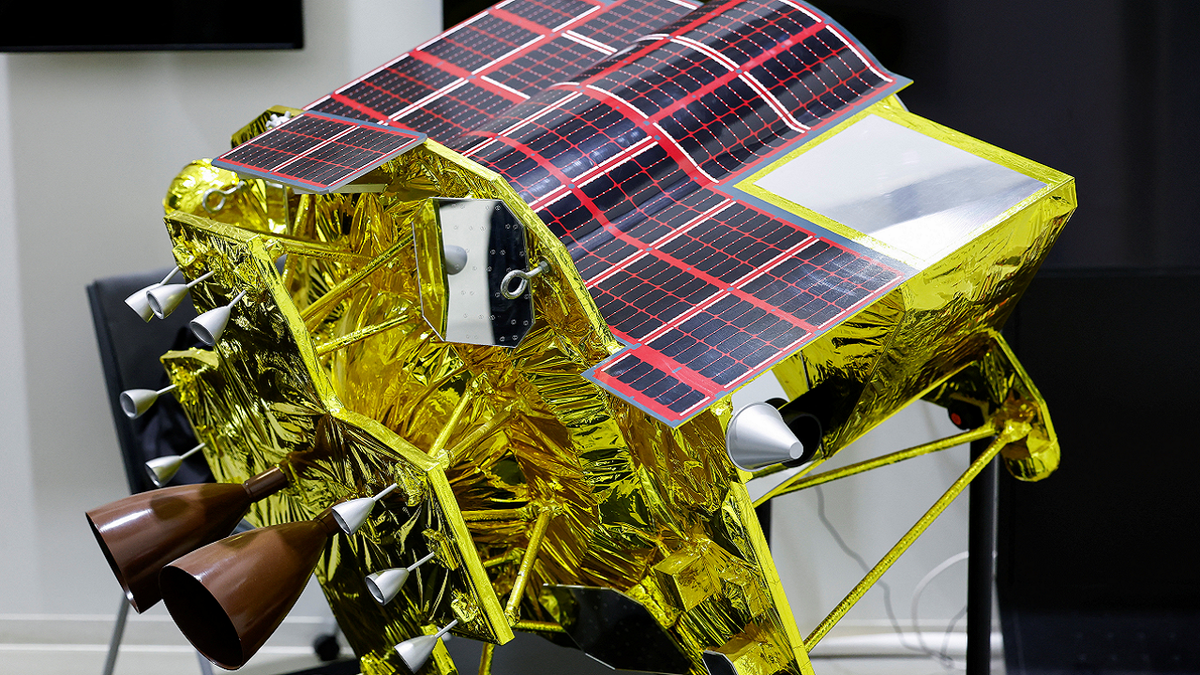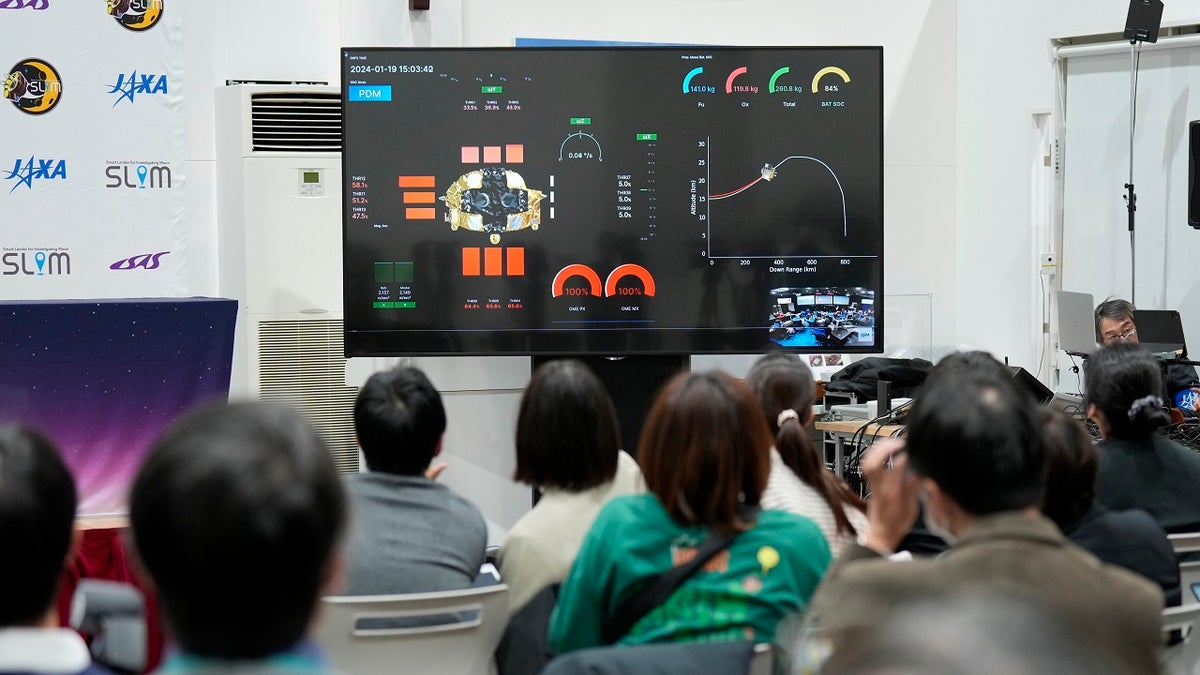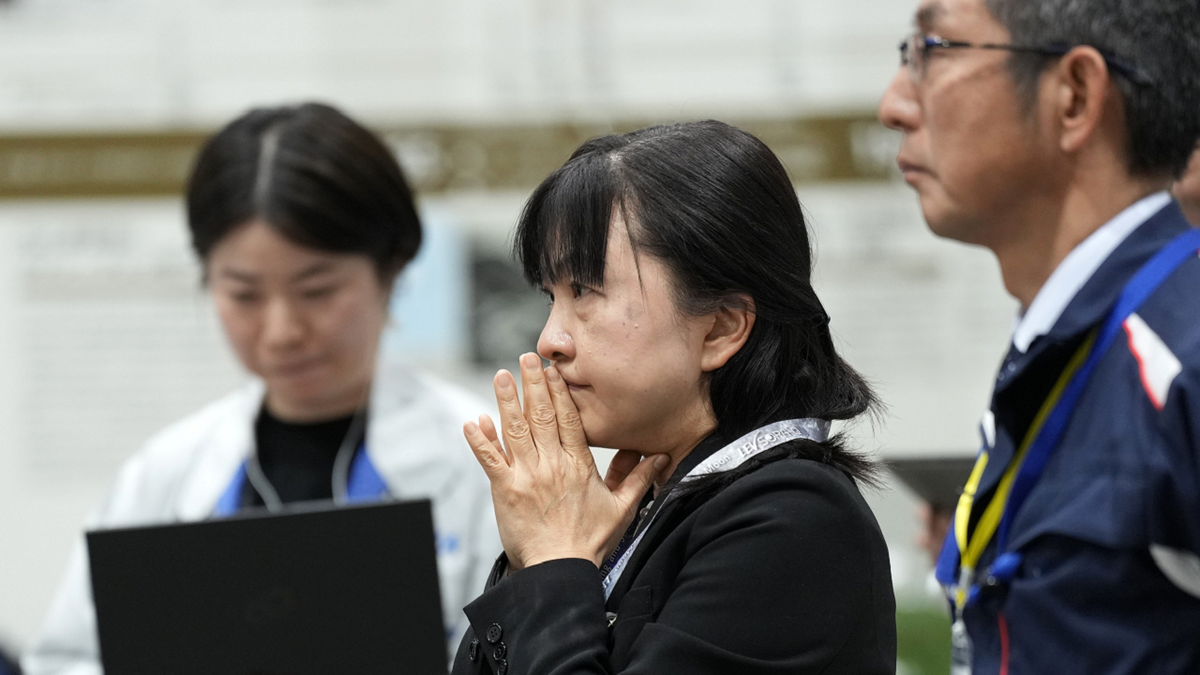Fox News Flash top headlines for January 23
Fox News Flash top headlines are here. Check out what's clicking on Foxnews.com.
The Japan Aerospace Exploration Agency announced it has shut off the power of its SLIM moon lander in hopes of "possibly" starting the spacecraft back up again at a later date.
Japan became the fifth country in history to reach the moon early Saturday when the Smart Lander for Investigating Moon, SLIM, touched down on the lunar surface. But then operators said the craft’s solar panel was failing to generate power.
"At a battery level of 12%, the battery was disconnected (as planned) to avoid being unable to restart for a recovery operation due to over-discharge," the Japan Aerospace Exploration Agency said in a post on X.
"According to the telemetry data, SLIM’s solar cells are facing west. So, if sunlight begins to shine on the lunar surface from the west, there is a possibility of generating power, and we are preparing for recovery. SLIM can operate with power only from the solar cells."
JAPAN BECOMES THE FIFTH COUNTRY TO REACH THE MOON AFTER ITS SPACECRAFT LANDED ON THE LUNAR SURFACE

A miniature model of the Smart Lander for Investigating Moon (SLIM) is displayed at Japan Aerospace Exploration Agency's facility in Sagamihara, south of Tokyo, Japan, Jan. 19. (Reuters/Kim Kyung-Hoon)
"Until power was switched off after landing, the technical and image data acquired during the landing descent and on the lunar surface were successfully transmitted," it also said. "We are preparing to announce the status of SLIM and current results at the end of the week. Although the attitude after landing did not go as planned, we are glad we could achieve so much and are happy to have landed successfully."
NASA ANNOUNCES DELAYS OF ARTEMIS PROGRAM, PUSHING MOON LANDING TO 2026

Journalists watch a livestream of the pinpoint moon landing operation by the Smart Lander for Investigating Moon spacecraft at JAXA's Sagamihara Campus Jan. 20 near Tokyo. (AP/Eugene Hoshiko)
Japan follows the United States, the Soviet Union, China and India in reaching the moon. SLIM was launched on a Mitsubishi Heavy H2A rocket in September. It initially orbited Earth and entered lunar orbit Dec. 25.
SLIM was carrying two small autonomous probes — lunar excursion vehicles LEV-1 and LEV-2, which officials say were believed to have been released just before landing.

Staff of the Japan Aerospace Exploration Agency watch a livestream of the landing Saturday. (AP/Eugene Hoshiko)
CLICK HERE TO GET THE FOX NEWS APP
LEV-1, equipped with an antenna and a camera, was tasked with recording SLIM's landing. LEV-2, is a ball-shaped rover equipped with two cameras, developed by the Japan Aerospace Exploration Agency together with Sony, toymaker Tomy and Doshisha University.
The Associated Press contributed to this report.





















